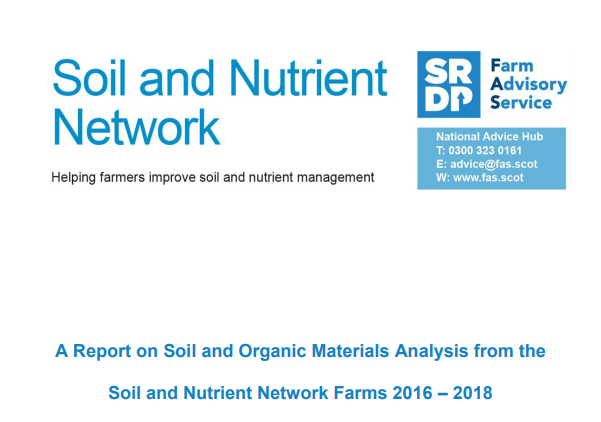A Report on Soil and Organic Materials Analysis from the Soil and Nutrient Network Farms 2016 – 2018
Introduction
Improving soil and nutrient management on farm makes farm businesses more profitable by increasing nutrient use efficiency, and has other benefits including lowering the carbon footprint of the farm and reducing diffuse pollution risks. Even technically efficient farms can find small changes to current soil and nutrient management practices that will make a big difference. The aim of the Soil and Nutrient Network (SNN) is to improve farm soils by making the best use of both organic and inorganic fertilisers, saving money, benefitting yields and improving farm efficiency and resilience. This report on the Soil and Organic Materials Analysis from the Soil and Nutrient Network Farms (2016 – 2018) summarises the soil, farm yard manure and slurry data generated across the SNN farms. The aim of this report is to promote and encourage nutrient management and allow farmers to benchmark their test results against the results from the Soil and Nutrient Network farms.
Summary of Key Points
- A total of 273 soil samples, 14 slurry samples and 14 farm yard manure samples have been taken from the Soil and Nutrient Network farms.
- Farm yard manure and slurry analysis varied between samples in dry matter content and nutrient levels highlighting the need to test individual samples and obtain an analysis for effective nutrient management practice.
- The soil pH results showed that 47% of soil samples were less than pH 5.8, 35% were between pH 5.8 and 6.2 and 18% were above pH 6.2.
- The phosphorous (P) soil analysis showed that 33% of samples were Low or Very Low Status, 60% were Moderate(±) Status and 7% were High or Very High Status.
- The potassium (K) soil analysis showed that 11% of samples were Low or Very Low Status, 56% were Moderate(±) Status and 33% were High or Very High Status.
- The magnesium (Mg) soil analysis showed that 1% of samples were Low or Very Low Status, 66% were Moderate(±) Status and 33% were High or Very High Status.
- The individual PK levels of organic materials and soil samples varied and in order to implement an effective nutrient management strategy individual samples should be tested for nutrient concentrations.

Sign up to the FAS newsletter
Receive updates on news, events and publications from Scotland’s Farm Advisory Service
